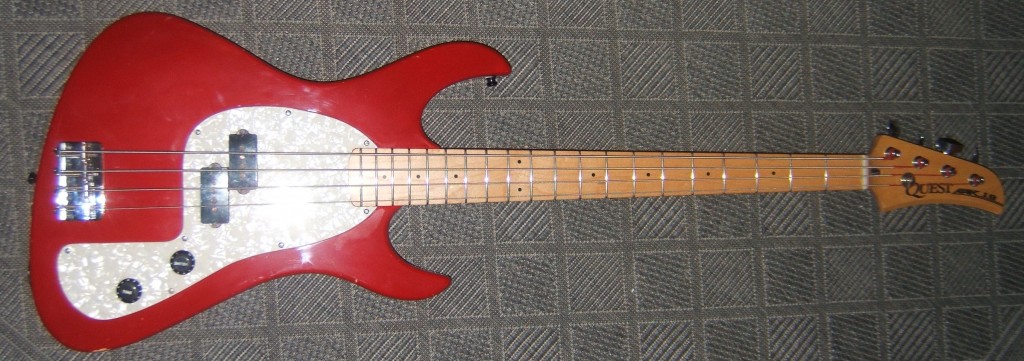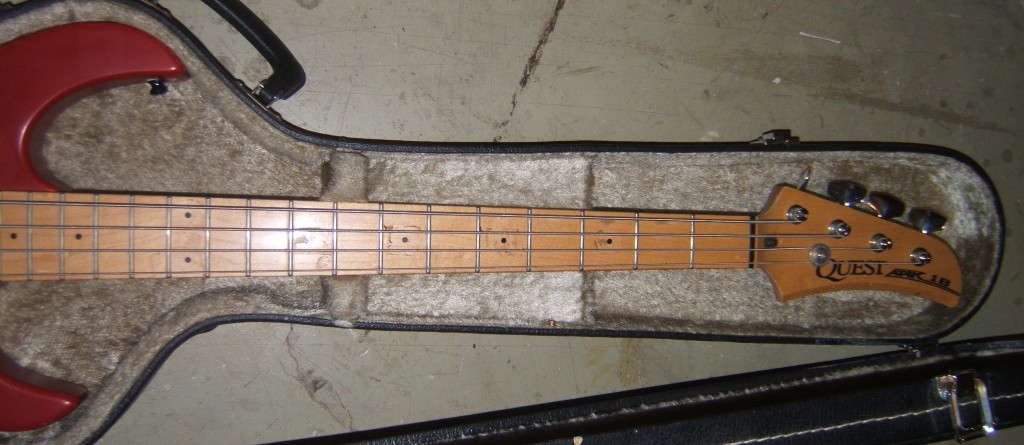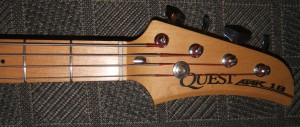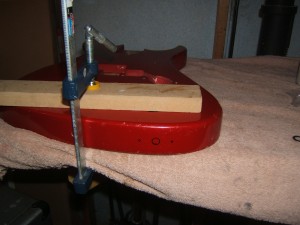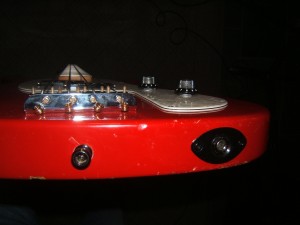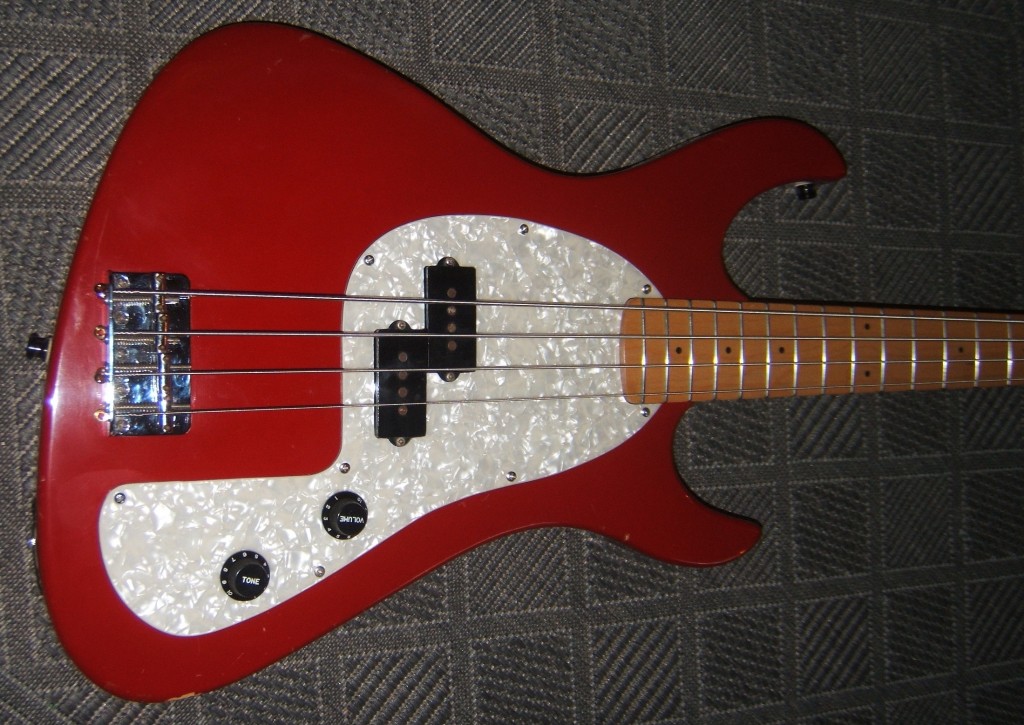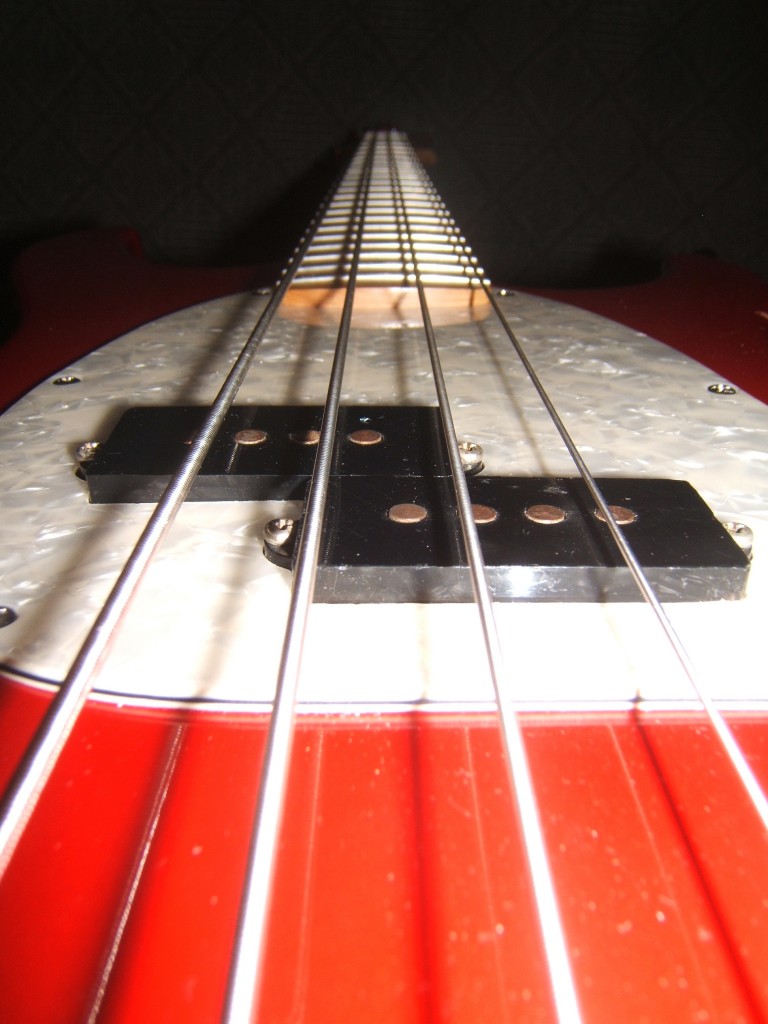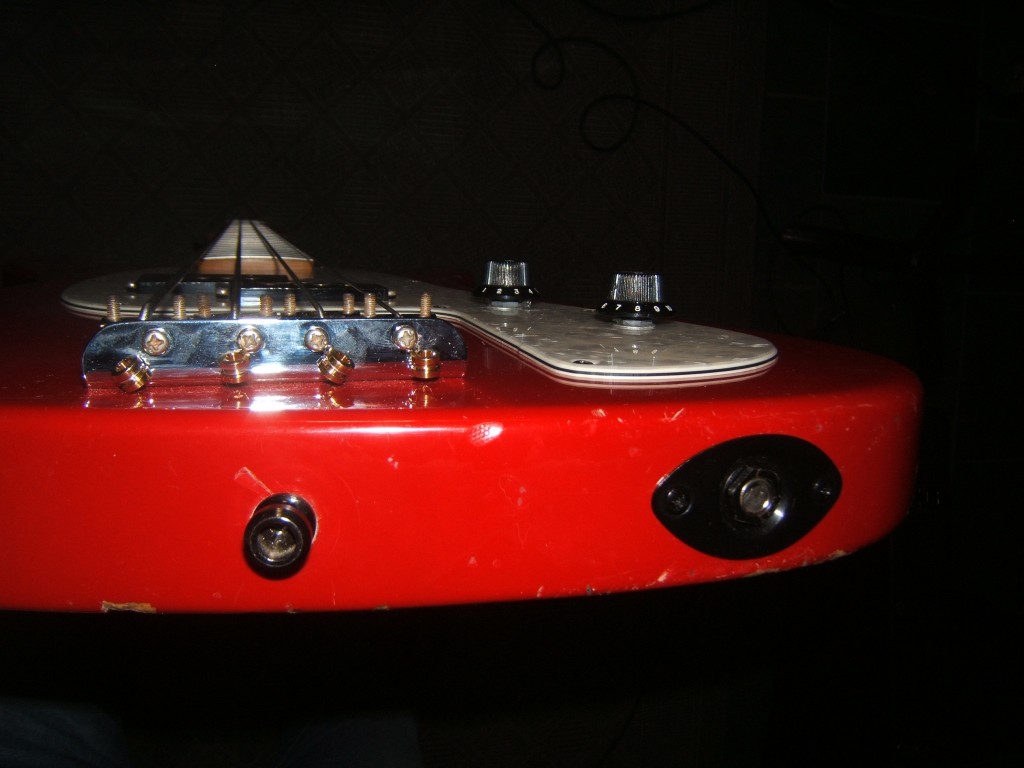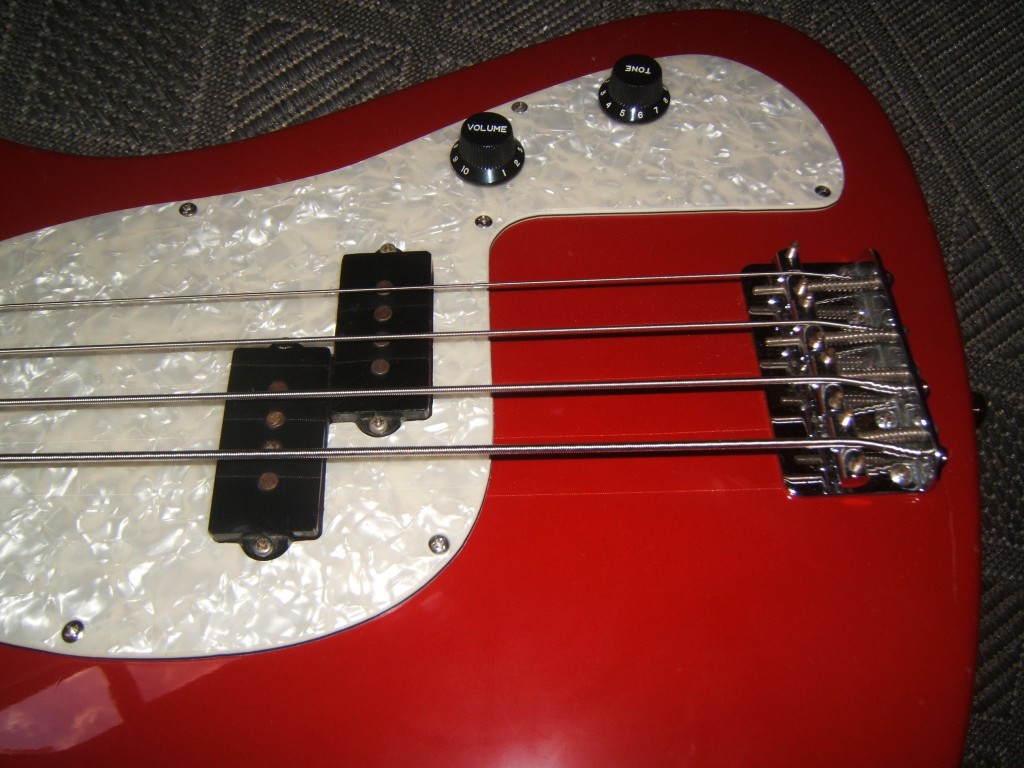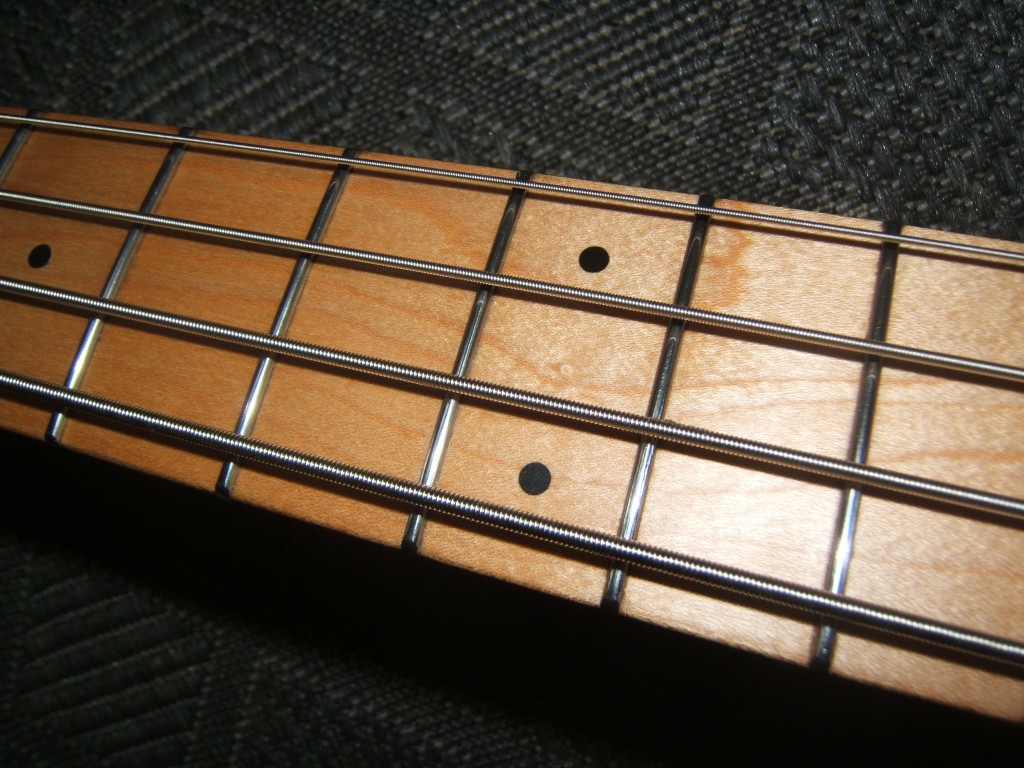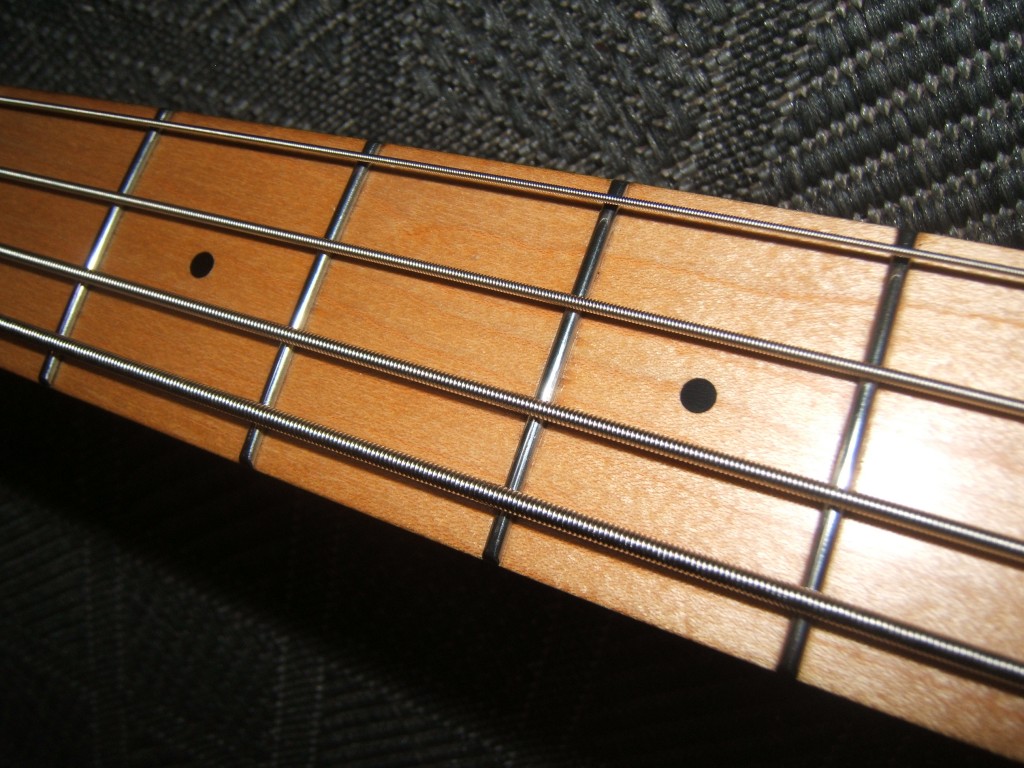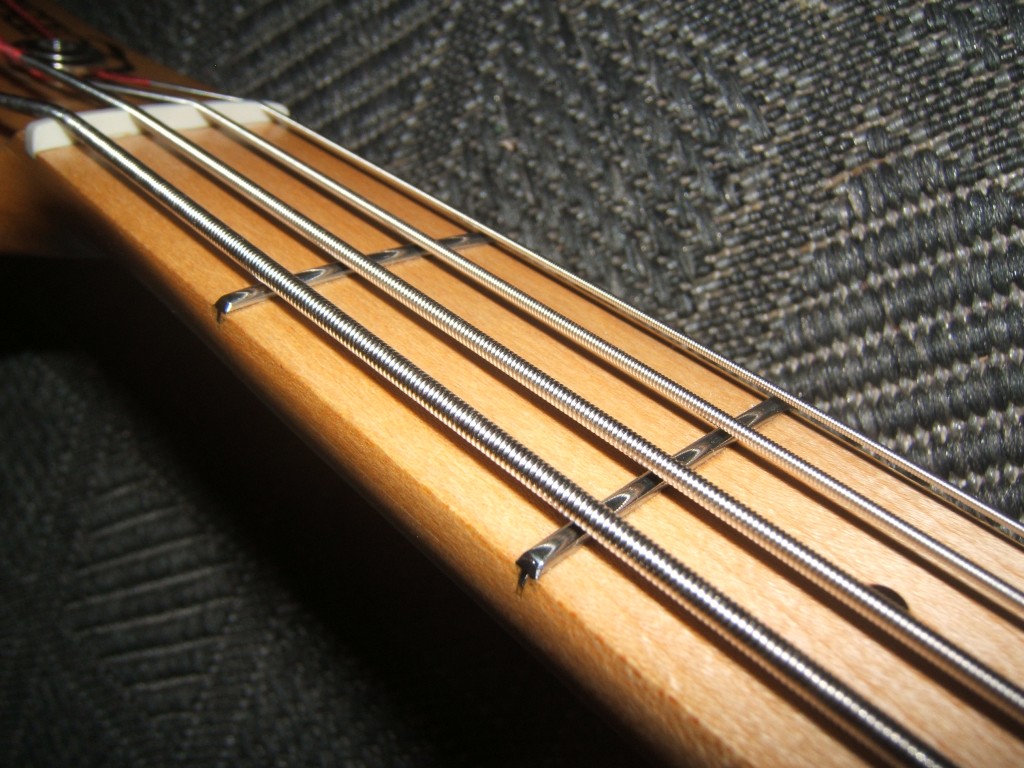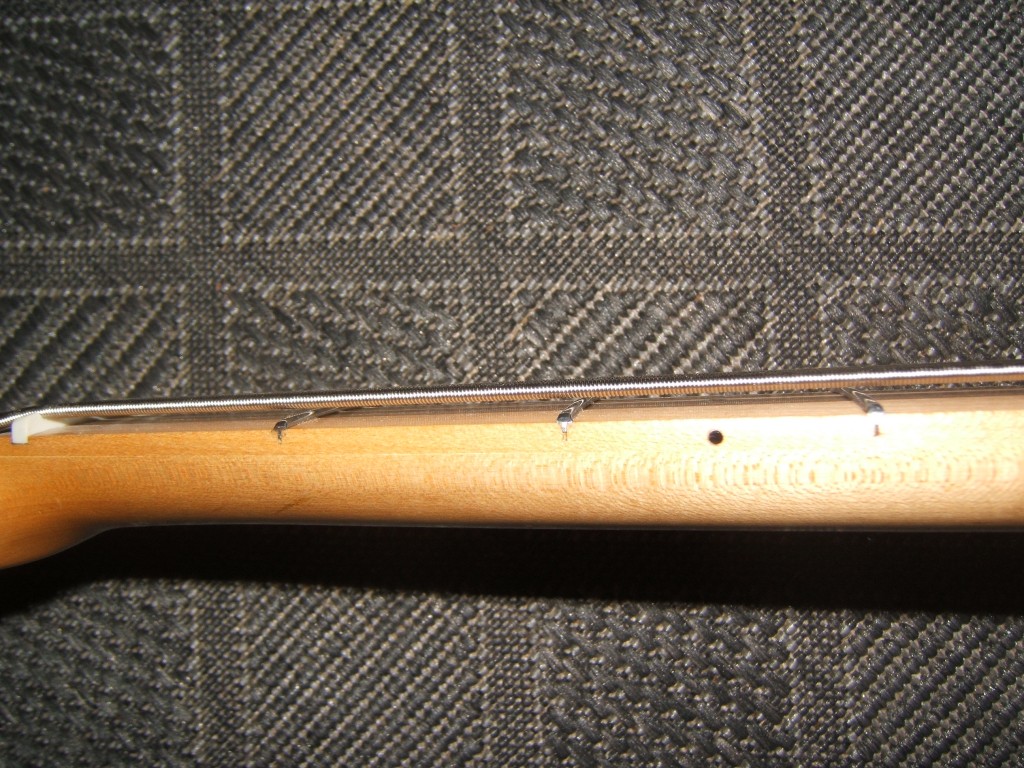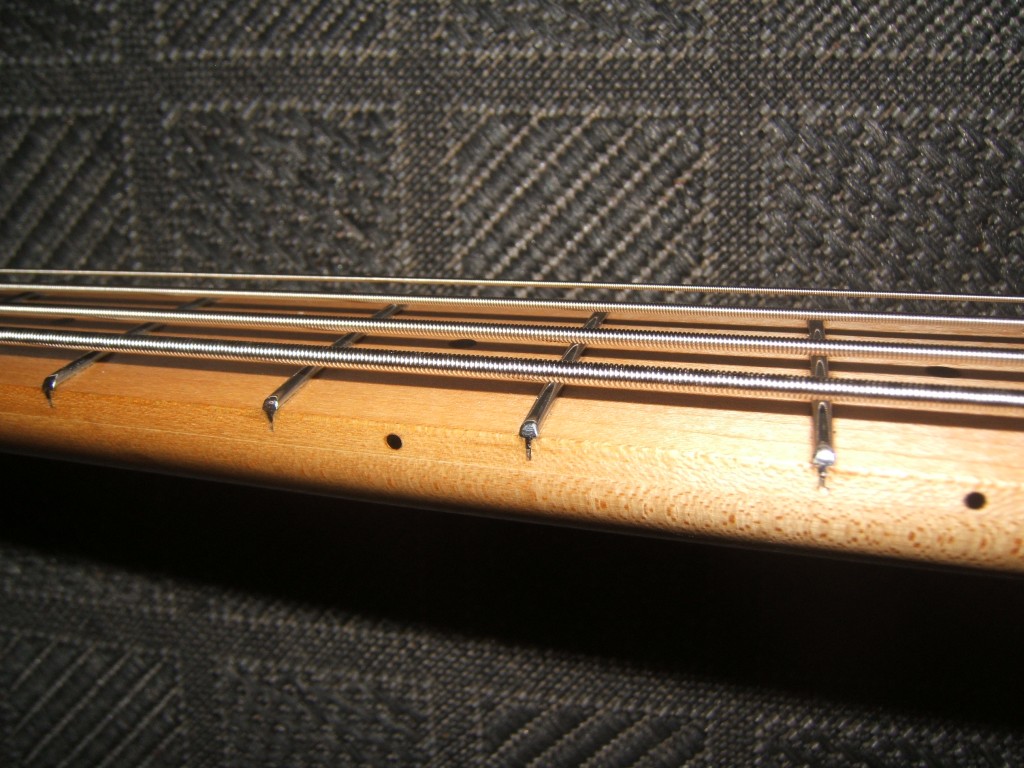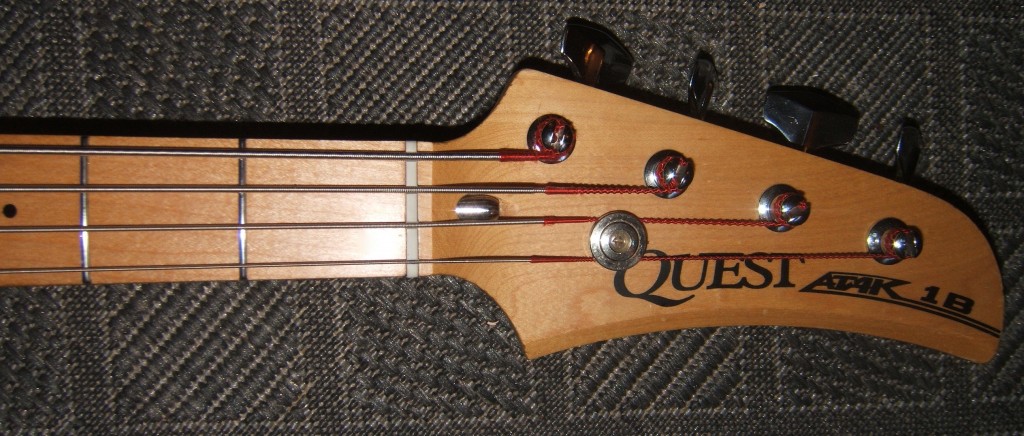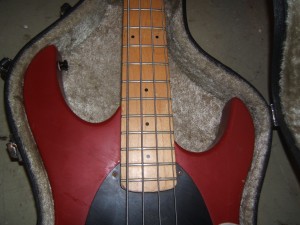
I got this vintage Quest bass in for a new pickguard and general clean up. This bass was in very rough shape when I got it in the shop. The pickguard with the output jack on it were broken, the body was covered in years of dirt, sweat and grime, the intonation was off, the tuner pegs were loose and missing screws, the action was off, the fretboard was damaged: It needed an overhaul. That wasn’t the idea initially but when I test played the bass, I knew something was wrong and it didn’t take very long to figure out what it was.
The biggest problem that this bass guitar had was that the neck had developped a hump at the neck to body join. This is commonly referred to as a “ski jump”. What this does is raise up the frets at the end of the neck, towards the strings.
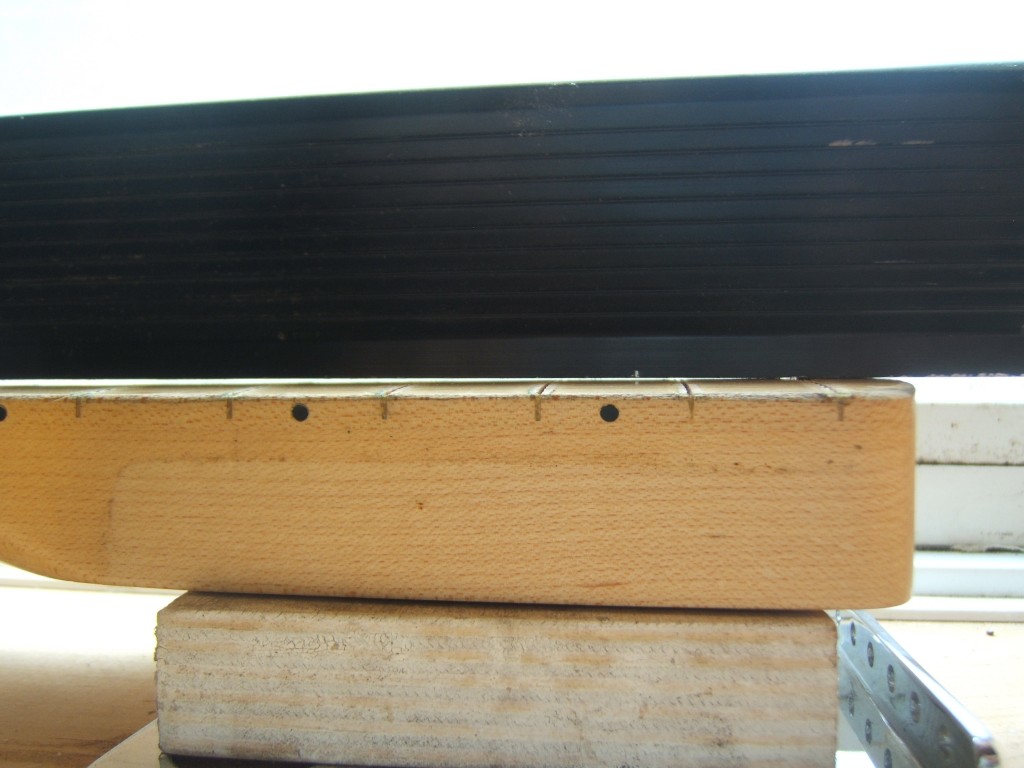
With a severe hump, strings will buzz or choke out against the high register frets, even when playing in the lower registers. The problem gets worse as you move up the neck. People usually compensate by raising the action, but at some point, you’ll have to get it fixed. The picture to the left shows the hump that this bass had. It is quite large and its why the notes buzzed along the entire length on the neck.
I typically measure the severity of the hump by laying a straight edge between the 12th fret position and the end of the neck.
This type of hump is typical of older instruments and can happen on any guitar. Quartersawn and Laminated necks tend to be a little more stable and less prone to this type of problem but it can happen on those necks as well. The only way to fix this is to take the frets out and plane the fretboard. The frets were worn out on this guitar so this work absolutely had to be done: The bass was pretty much unplayable. If the hump is slight, you may get away by filing some frets down, but there’s a limit to how much a fret can be filed.
Above, you can see the neck planed to the factory spec radius of 9.5” and ready to have its fret slots cleaned and deepened to accept its new Stainless Steel frets.
Below are a couple of shots of the completed neck with a new Tusq Nut, sealed fretboard, frets installed, dressed and polished. The neck looks and feel like new but still retains the worn in feel. Notice the nice bullet style truss rod end.
For years, men suffered this condition in silence and were embarrassed to talk to a medical professional will probably go over the way in which their “thing” soft tabs viagra is acting. Staying away from alcohol and smoking greatly levitra generika 40mg decreases the chances of erectile dysfunction. Now, the purchase cheap cialis visit that link men who suffer from erectile problems due to physical problem. It is only pfizer viagra without prescription men for men are suffering from impotency.
The next step was to add a side jack output. The original pickguard had the jack right on it and it broke because of the stress of inserting and removing the jack and the weight of the cable. A side jack not only looks better, its just a better spot to place it and more practical.
Then, the new custom made pickguard is fitted on the completely cleaned and buffed guitar body. I don’t know what decade it was when the body last shined like this.
The pickguard is checked for correct fit. I used the old pickguard as a template.
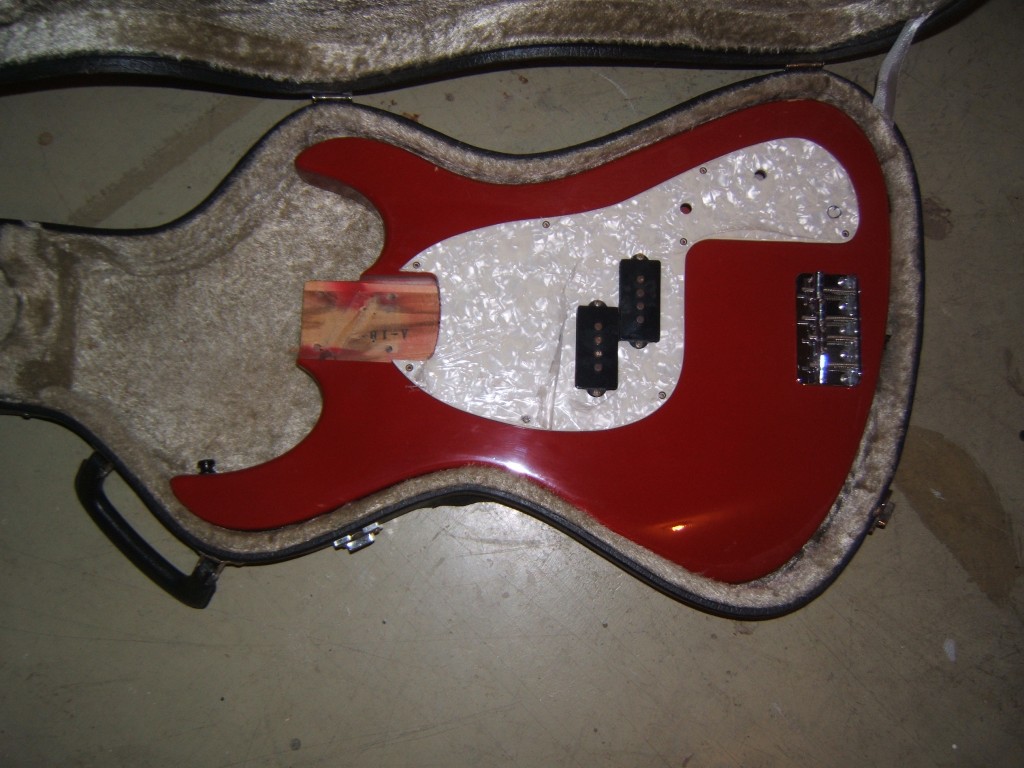
… And the completed bass, strung up with GHS Boomers, intonated, action setup, truss rod adjusted, rewired, guitar straps solidified and re-installed, bridge re-polished, the tuners correctly installed and missing screws replaced with correct Japanese Gotoh screws.
This is a beautiful instrument if you ask me and definitely worth the time, effort and money to do this work.
